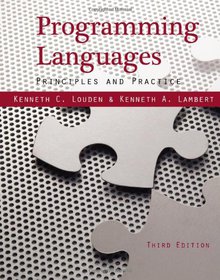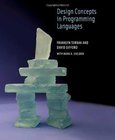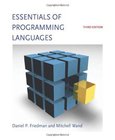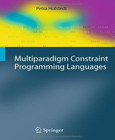Programming Languages
Principles and Practices
3rd Edition

Book Details:
| Publisher: | Cengage Learning |
| Series: | Cengage , Principles |
| Author: | Kenneth C. Louden |
| Edition: | 3 |
| ISBN-10: | 1111529418 |
| ISBN-13: | 9781111529413 |
| Pages: | 672 |
| Published: | Jan 26 2011 |
| Posted: | Nov 19 2014 |
| Language: | English |
| Book format: | |
| Book size: | 3.2 MB |
Book Description:
Kenneth Louden and Kenneth Lambert's new edition of PROGRAMMING LANGUAGES: PRINCIPLES AND PRACTICE, 3E gives advanced undergraduate students an overview of programming languages through general principles combined with details about many modern languages. Major languages used in this edition include C, C++, Smalltalk, Java, Ada, ML, Haskell, Scheme, and Prolog; many other languages are discussed more briefly. The text also contains extensive coverage of implementation issues, the theoretical foundations of programming languages, and a large number of exercises, making it the perfect bridge to compiler courses and to the theoretical study of programming languages.
Download Link:
Related Books:
IEC 61131-3 Programming Industrial Automation Systems
Concepts and Programming Languages, Requirements for Programming Systems, Decision-Making Aids
2nd Edition
The rapid advances in performance and miniaturisation in microtechnology are constantly opening up new markets for the programmable logic controller (PLC). Specially designed controller hardware or PC-based controllers, extended by hardware and software with real-time capability, now control highly complex automation processes. This has been extended by the new subject of safe- related controllers, aimed at preventing injury by machines during the production process. The different types of PLC cover a wide task spectrum - ranging from small network node computers and distributed compact units right up to modular, fau- tolerant, high-performance PLCs. T...
Design Concepts in Programming Languages
Hundreds of programming languages are in use today--scripting languages for Internet commerce, user interface programming tools, spreadsheet macros, page format specification languages, and many others. Designing a programming language is a metaprogramming activity that bears certain similarities to programming in a regular language, with clarity and simplicity even more important than in ordinary programming. This comprehensive text uses a simple and concise framework to teach key ideas in programming language design and implementation. The book's unique approach is based on a family of syntactically simple pedagogical languages that allow students to explore programming language concepts systematically. It takes as premise and starting point the id...
Essentials of Programming Languages
3rd Edition
This book provides students with a deep, working understanding of the essential concepts of programming languages. Most of these essentials relate to the semantics, or meaning, of program elements, and the text uses interpreters (short programs that directly analyze an abstract representation of the program text) to express the semantics of many essential language elements in a way that is both clear and executable. The approach is both analytical and hands-on. The book provides views of programming languages using widely varying levels of abstraction, maintaining a clear connection between the high-level and low-level views. Exercises are a vital part...
Multiparadigm Constraint Programming Languages
Programming languages are often classified according to their paradigms, e.g. imperative, functional, logic, constraint-based, object-oriented, or aspect-oriented. A paradigm characterizes the style, concepts, and methods of the language for describing situations and processes and for solving problems, and each paradigm serves best for programming in particular application areas. Real-world problems, however, are often best implemented by a combination of concepts from different paradigms, because they comprise aspects from several realms, and this combination is more comfortably realized using multiparadigm programming languages. This book deals with the theory and practice of multiparadigm constraint programming languages. The author first elaborat...
2007 - 2021 © eBooks-IT.org




